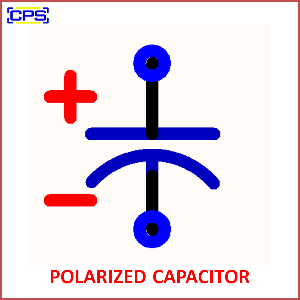A Polarized Capacitor is a type of capacitor that has a fixed polarity, meaning it must be connected to a circuit with the correct orientation. It has a positive terminal (anode) and a negative terminal (cathode) and cannot tolerate reverse voltage without the risk of damage or failure.

Key Features of a Polarized Capacitor
- Polarity:
- Designed to function only when connected with the correct polarity.
- Incorrect polarity can cause leakage, overheating, or explosion.
- Construction:
- Typically made with electrolytic materials (e.g., aluminum or tantalum oxide).
- Higher Capacitance:
- Provides higher capacitance values compared to non-polarized capacitors, making them suitable for applications requiring large energy storage.
Types of Polarized Capacitors:
- Electrolytic Capacitors:
- Most common type; uses an electrolyte to achieve high capacitance.
- Tantalum Capacitors:
- Smaller and more stable than aluminum electrolytic capacitors, with better frequency response and reliability.
Applications of Polarized Capacitors:
- Power Supply Circuits:
- Used for filtering, decoupling, and smoothing in DC power supplies.
- Audio Circuits:
- Used in coupling and decoupling to block DC while allowing AC signals to pass.
- Timing Circuits:
- Found in oscillator and timing applications requiring precise capacitance.
Advantages:
- High capacitance in a compact size.
- Suitable for low-frequency applications, such as DC circuits.
Disadvantages:
- Sensitive to polarity; reverse connection can cause failure.
- Limited to DC applications due to the requirement for correct polarity.
- Shorter lifespan compared to non-polarized capacitors in certain conditions.
